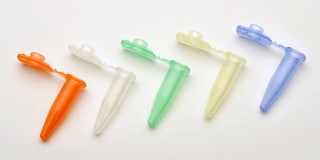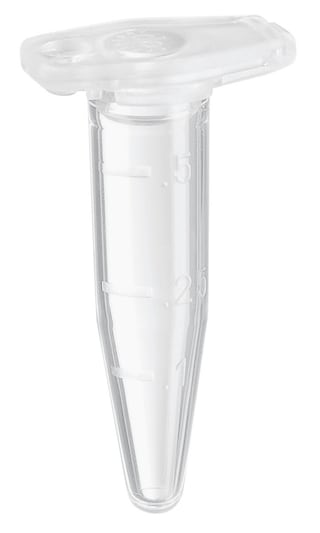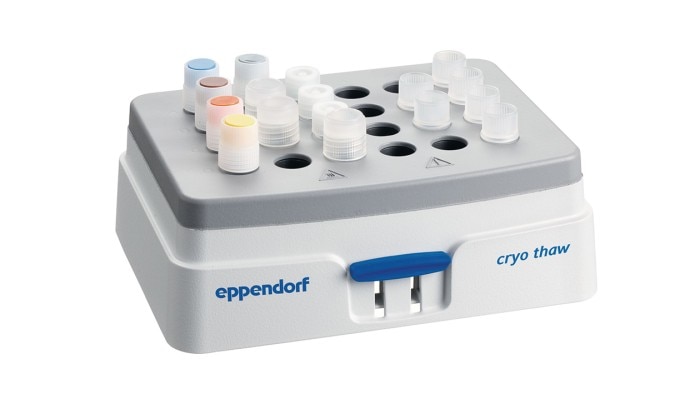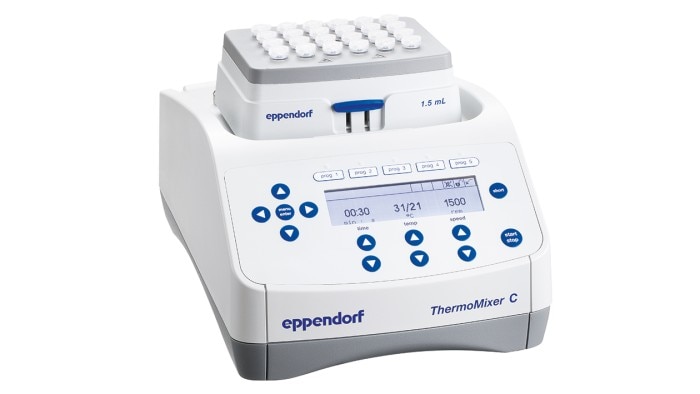菜单
CN | CNY
CN | CNY
Sorry, we couldn't find anything on our website containing your search term.
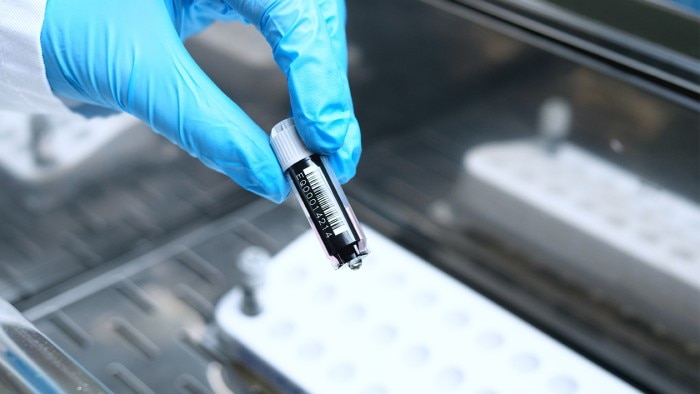
Cell thawing device – Advantages & Disadvantages
This article compares the manual thawing of cryovials using a water bath to dedicated cell thawing devices using the example of the Eppendorf SmartBlock cryo thaw for the Eppendorf ThermoMixer® C.
The most commonly used procedure of thawing frozen cells is partial submersion of cryovials in a 37 °C water bath. This method however comes with several drawbacks, especially regarding the risk of contamination and process standardization. To address these issues, several manufacturers have developed dedicated cell thawing devices. This article compares the manual thawing of cryovials using a water bath to dedicated cell thawing devices using the example of the Eppendorf SmartBlock cryo thaw for the Eppendorf ThermoMixer® C.
显示更少
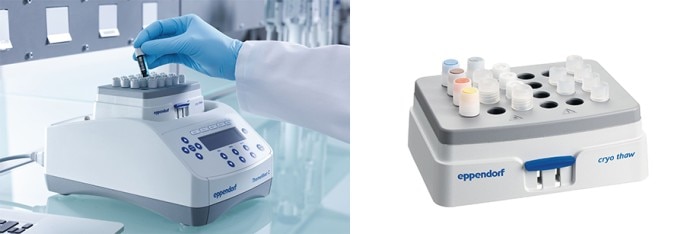
Simultaneous thawing of up to 24 cryovials (barcoded Eppendorf CryoStorage Vials shown here) with the Eppendorf SmartBlock cryo thaw.
Wash me but don´t get me wet – Contamination risk of a classical water bath vs. a cell thawing device
A water bath is usually a shared device frequently accessed by many users to warm up different liquids like media, reagents or frozen cells. The large water surface area of the water bath, it´s warm and moist environment, as well as its frequent contact with unsterile vessels make it an ideal breeding ground for contaminants. In the context of cell thawing, several factors contribute to a high contamination risk of the cryovial in the water bath. To speed up thawing and avoid thermal gradients, cryovials are usually continuously agitated submerged as deep as safely possible. Keeping the lid (water wicking effect!) out of the water bath during the process can be difficult, especially as the vials need to be checked continually in between. A dedicated cell thawing device works without water, therefore it comes with a significantly lower risk of contamination. An additional level of contamination protection can be achieved by placing the disinfectable cell thawing device into the biosafety cabinet as part of the sterile process.
显示更少

Due to the warm, humid atmosphere inside and the frequent contact of the water with unsterile vessels, the water bath is considered a major source of contamination in a cell culture lab.
The cell thawing process - The quicker the better?
Whereas cell freezing should be performed at a slow, controlled rate, thawing frozen cells works best when it is done quickly. This is necessary to reduce the risk of ice recrystallization and the risk of an osmotic shock to the rehydrating cells. A water bath ensures rapid heating as water has an excellent thermal conductivity and a close water-vial contact is ensured over the submerged vial surface. Additional agitation ensures a constantly high temperature gradient across the water-freezing medium interface, a rapid heat transfer and therefore a fast thawing process. Cell thawing with a dedicated device is usually slightly slower, yet resulting in thaw times ≤ 5 minutes and comparable cell viability even with sensitive cells.
显示更少
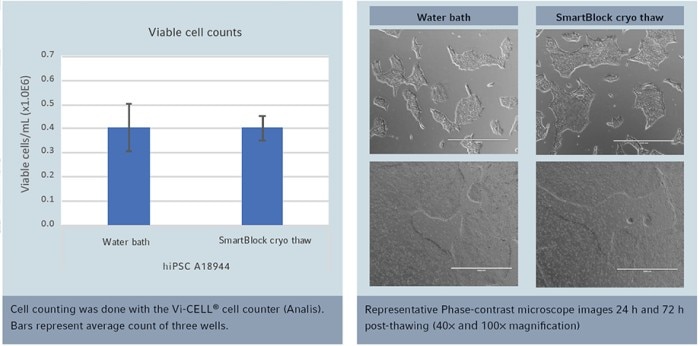
Abbildung aus https://www.eppendorf.com/product-media/doc/en/969557/Sample-Preparation_Performance-Sheet_Episomal-Human-iPSC-SmartBlock-cryo-thaw_Episomal-Human-iPSC-SmartBlock-cryo-thaw.pdf
See also Eppendorf SmartBlock cryo thaw Performance Sheets for other cell types:
Advantages of a cell thawing device vs. water bath
Disadvantages of a cell thawing device vs. water bath
Summary
Advantages of a cell thawing device vs. water bath
- minimized contamination risk (no contact of the vial with water of the water bath)
- depending on method used: standardized and reproducible thawing process (thawing rate,final vial temperature etc.)
- position inside the biosafety cabinet possible•thorough disinfection faster and easier
- depending on which device and water bath thawing method is used: higher throughput asseveral vials can be thawed simultaneously
- can be used for other heating, cooling, and mixing tasks (Eppendorf ThermoMixer® C.)
Disadvantages of a cell thawing device vs. water bath
- additional investment necessary
- additional space on benchtop or under biosafety cabinet needed, although most devicescome with a very small footprint or can be used for other general purposes as well
显示更少

